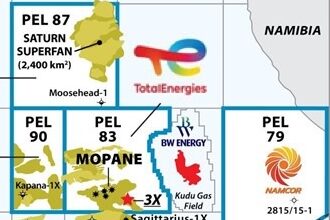NPD: Norway looks to natural gas, increased exploration, EOR techniques to boost production
By Linda Hsieh, managing editor

Norwegian oil production may have been on the downslide since the early 2000s, but the country is confident it can make up for that decline by boosting production of natural gas. Meeting with journalists in Stavanger on 14 April 2010, Norwegian Petroleum Directorate (NPD) director of discoveries and fields south Johannes Kjøde emphasized his country’s ambitions to keep total hydrocarbon production at roughly the same level from now into the 2020s. “At least that is the ambition we have, and we also think that it’s not too far from reality,” he said.
“Gas will almost compensate for the decline in oil,” Mr Kjøde commented. NPD estimates that Norway’s total hydrocarbon production will remain between 200 million to 250 million standard cu m (scm) oil equivalent per year.
As of 31 December 2009, Norway had produced a cumulative total 5.3 billion scm oil equivalent and had an estimated 4.8 billion scm oil equivalent of proven reserves remaining. There were 65 fields in production, eight fields under development, 82 discoveries under evaluation and approximately 290 enhanced oil recovery projects for existing fields, according to NPD.
On the exploration side, Mr Kjøde said, 2009 saw a record number of exploration wells on the Norwegian Continental Shelf (NCS): 65, of which 44 were wildcats. For 2010, NPD is forecasting between 40 to 50-odd exploration wells – which would be fewer than in 2009 but still higher than in 2007.

Some 200 billion NOK were invested on the NCS in 2009. “Maybe you would expect that the financial crisis would give a real dip on the investment curve, but that didn’t happen,” probably because the projects had already been determined, he said.
From the 65 exploration wells drilled in 2009, there have been “encouraging exploration results.” Twenty-eight new discoveries were made last year – 21 in the North Sea and seven in the Norwegian Sea. “A lot of these were in the Tampen and Sleipner areas,” Mr Kjøde said.
“We also had one of the most exciting discoveries, which was the Gro gas discovery” in the northern Norwegian Sea, he added. That prospect should be delineated this year, and he believes that neighboring prospects to be drilled in the same area could produce a new gas center for Norway.
The 28 new discoveries also account for between 36 million to 94 million scm of recoverable oil/condensate and between 37 billion to 154 billion scm of recoverable gas, according to NPD. “This is one of the better replacement rates we have had for many, many years,” Mr Kjøde said.
He acknowledged, however, that the discoveries were small because most of the wells were drilled in mature areas. “As long as we rework old acreage, you can’t expect to find the Statfjords and Ekofisks. If you want to find them, you have to go out to new acreage.”

“We are satisfied with the total volume, but we would like to see some more material discoveries – there’s no doubt about that,” he added.
NPD forecasts show that the agency believes there’s still anywhere between 1.56 billion to 5.8 billion scm of oil equivalent in undiscovered resources on the NCS – roughly a third each in the North Sea, Norwegian Sea and Barents Sea. “We have so much information for the North Sea that the uncertainty there is very little. We still think we will find a lot of oil and gas in the North Sea… (There’s) a lot more uncertainty when you go out to the Barents Sea. We have much less data. Some 80 exploration wells is all that’s been drilled in the Barents Sea. We think the Barents Sea is still in its infancy,” Mr Kjøde said.
ENHANCING RECOVERY
Six new fields came on production in 2009 for Norway – Delta, Volund, Rev, Alve, Yttegryta and Tyrihans. The largest of those is Tyrihans, which has recoverable volumes of 186 million bbl of oil and condensate and 41.5 million scm of gas. Infrastructure on this field were designed for a production life of more than two decades.
“The challenge on the field side is that there is a lot more in the ground than we are able to produce,” Mr Kjøde said. “And that’s something that’s been a focus since the ’80s… What if we can extract more, particularly in these big fields? Just 1% extra is a lot of volume.”
Recent studies conducted by NPD indicate that more than half of the country’s remaining reserves are considered movable. “This mobile oil can be extracted with the same techniques we use today – water and gas injection combined – given that we can get economy into these projects.”
Moreover, environmental issues will have to be addressed before these EOR techniques will become routine. “Coexistence with fisheries, which is an important part of activity on the Norwegian coastline – that’s very important for our future success,” Mr Kjøde said.




